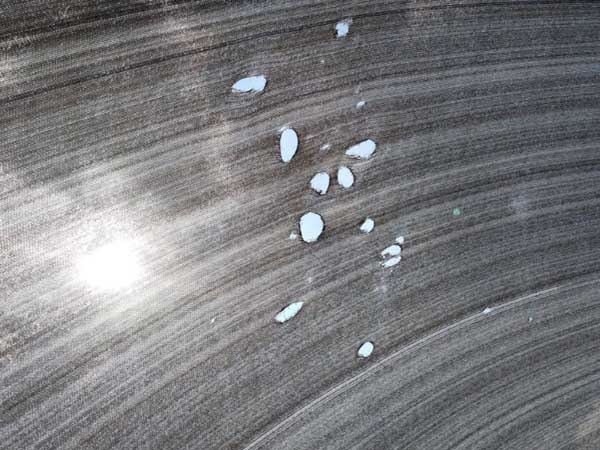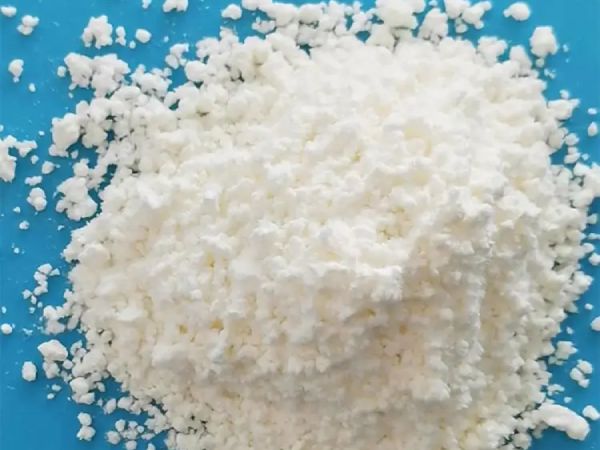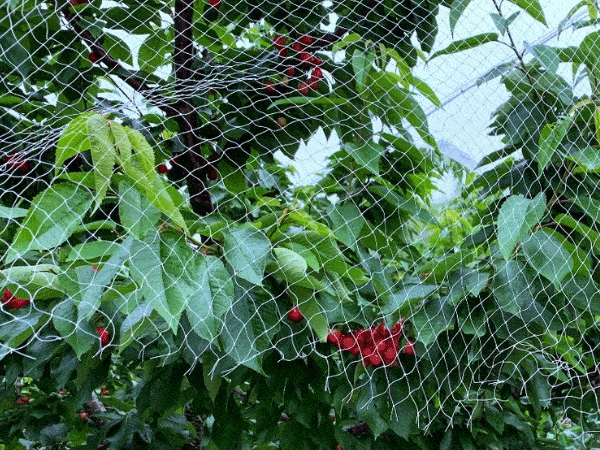In agriculture, construction, aquaculture, and other outdoor industries, plastic netting is widely used to protect both people and crops. These nets come in many types — they may look similar at first glance, but each has distinct characteristics and performance traits. As a result, choosing the right netting material can often be confusing. Should you go with HDPE or nylon? And what’s the most suitable option for greenhouse farming or large-scale agricultural protection?
To clarify these questions and help users make informed decisions, this article provides a detailed comparison of three of the most common types of plastic netting on the market today — HDPE, nylon, and standard PE — evaluated across five essential performance dimensions. (The INSONSHADE Agricultural Textile Expert Team has reviewed this article and draws upon multiple materials science publications and verified industry testing data.)
Core Properties of HDPE, Nylon, and PE Nets
Although HDPE, nylon, and PE nets are all polymers, their densities, stabilities, water absorption, and UV resistance vary widely — directly influencing how they perform in different environments. These physical and chemical differences determine whether a net will stay firm under heat, deform in humidity, or resist ultraviolet degradation over years of outdoor exposure.
| Property | HDPE (High-Density Polyethylene) | Nylon (Polyamide) | PE (Low-Density Polyethylene) |
|---|---|---|---|
| Density | Tight molecular structure; highly stable and non-deformable | Medium density; flexible but elongates when humid | Low density; loose structure, prone to aging |
| Tensile Strength | High and stable under long-term tension | High, but decreases 10–15% in humid conditions | Low, easily stretched or torn |
| UV Resistance | Excellent (can include UV stabilizers) | Moderate, yellows, and degrades over time | Poor, chalks and fades quickly |
| Water Absorption | Extremely low; moisture-proof | High; absorbs up to 3–5% | Low, but weak stability |
| Temperature Range | −30°C to +80°C | −20°C to +60°C | 0°C to +50°C |
| Eco-Friendliness | Recyclable, low carbon footprint | Recyclable but energy-intensive | Recyclable but short lifespan |
| Overall Performance | Durable and ideal for long-term outdoor use | Highly flexible for elastic-demand applications | Low-cost, short lifespan for temporary use |
Performance Comparison: Durability, UV, and Environmental Resistance
To help you better understand the differences among these materials, let’s compare them from several key perspectives. We’ll begin with one of the most fundamental indicators — tensile strength.
1. Tensile Strength
Tensile strength is the maximum force a material can withstand before breaking. In long-span applications such as shade netting or construction safety nets, HDPE netting performs the best. Its dense molecular arrangement and low elongation rate allow it to maintain shape and strength under continuous tension. Nylon nets start strong but lose part of their strength in humid conditions, while PE nets are more prone to stretching or tearing under heavy loads.

Low Quality Polyethylene Netting Broken
2. UV and Weather Resistance
UV radiation is the leading cause of plastic degradation. Prolonged exposure to sunlight breaks molecular bonds, leading to chalking, fading, and brittleness. HDPE shade nets that include UV stabilizers can resist such damage for 7–10 years, even in tropical regions. In comparison, nylon netting typically discolors and loses tensile strength after 2–4 years, while PE netting generally deteriorates within one to two years of direct sunlight exposure.

UV treatment and additives for durability
3. Temperature and Environmental Adaptability
Environmental conditions such as extreme heat, cold, or humidity can significantly affect netting performance. HDPE remains stable from −30°C to +80°C and is nearly unaffected by moisture. Nylon performs well in moderate conditions but tends to stretch and deform when humidity rises. PE is the least stable — it softens at high temperatures and becomes brittle in cold environments.
| Material | Temperature Range | Water Absorption | Environmental Stability |
|---|---|---|---|
| HDPE | −30°C to +80°C | <0.01% | Excellent, unaffected by moisture |
| Nylon | −20°C to +60°C | 3–5% | Moderate, deforms in high humidity |
| PE | 0°C to +50°C | <0.1% | Poor, softens or cracks with temperature change |
4. Cost, Lifespan, and Maintenance

Polyfab anti-bird netting installation by a worker
The real economic difference between netting materials lies not in the purchase price but in how long they last and how much maintenance they need. HDPE netting is slightly more expensive initially, yet it lasts five to ten years with minimal upkeep, making it the most cost-effective option over time. Nylon nets generally last 3 to 4 years and require moderate maintenance, while PE nets are cheaper but often need to be replaced every 1 to 2 years, leading to higher long-term costs.
| Material | Average Outdoor Lifespan | Maintenance Frequency | Relative Cost Level |
|---|---|---|---|
| HDPE | 5–10 years | Low | Medium |
| Nylon | 3–4 years | Medium | Medium-High |
| PE | 1–2 years | High | Low |
Recommended Plastic Netting by Application

Anti-bird nets to protect cherries
Each industry values different performance factors — agriculture focuses on UV and moisture resistance, construction demands structural strength and stability, while aquaculture and sports facilities prioritize flexibility. The following table summarizes which material is best suited for each use case, along with ideal mesh and wire specifications.
| Industry / Application | Recommended Material | Mesh Size & Wire Diameter (mm) | Notes |
|---|---|---|---|
| Agriculture (Anti-insect / Bird) | HDPE (Virgin) | 0.6–2 / 0.20–0.35 | UV-stable and acid-resistant; ideal for pest exclusion while maintaining airflow. |
| Shade & Temperature Control | HDPE (UV-stabilized) | 1–3/(Tape/Mono) | Custom shading (30–95%) options available; lifespan of 5–10 years, depending on UV stabilization. |
| Construction Debris / Scaffolding | HDPE (Reinforced Edge) | 1.5–5 / 0.4–0.6 | High-density mesh for dust control and the containment of small debris. Not designed for fall protection. |
| Construction Safety (Fall Arrest) | PP / Nylon (Knotless) | 45–100 / 4.0–6.0 | High tensile strength; compliant with EN 1263-1 and similar safety standards. Used for personnel fall arrest systems. |
| Fishing & Aquaculture | Nylon (PA6) or HDPE | 15–30 / 0.8–1.5 | Nylon offers flexibility and sinking ability; HDPE provides anti-fouling and rigidity for deep-water cages. |
| Sports (Barrier & Perimeter) | PE / Nylon | 20–50 / 0.8–1.5 | Lightweight, suitable for containing balls in play areas such as tennis or soccer fields. |
| Sports (High Impact) | Nylon / Polyester | 20–45 / 1.8–3.0 | Heavy-duty, knotless netting capable of absorbing high-velocity impacts; ideal for baseball or golf practice enclosures. |
| Temporary Fencing / Dust Control | Recycled PE / HDPE | 5–10 / 0.25–0.4 | Economical, lightweight, and easy to install; typically used as a visual or dust barrier for short-term projects. |
| Outdoor Canopies / Market Shade | HDPE (Woven) | 2–3 / 0.4–0.6 | Durable and reusable; maintains strength and color even under prolonged UV exposure. |
Expert Notes: Construction-related applications must differentiate between debris containment and fall protection nets. Similarly, in sports applications, mesh diameter and line thickness vary based on whether the net acts as a perimeter barrier or absorbs direct impact. This table reflects updated market data and compliance with international standards.
Conclusion
Overall, HDPE netting provides the best balance between durability, cost-effectiveness, and environmental sustainability. It’s now widely used in agriculture, construction, and commercial outdoor projects due to its superior UV resistance, long lifespan, and recyclability. Nylon netting remains the top choice for flexible or shock-absorbing applications such as fishing nets and sports barriers. In contrast, PE netting is suitable for temporary or low-budget scenarios where short-term protection is sufficient.
If you are looking for reliable and durable HDPE shade nets or protective netting from China, INSONSHADE offers professional solutions. As a specialized HDPE net manufacturer, we supply high-quality, performance-tested products designed for long-term outdoor use — helping you achieve both cost efficiency and sustainability in your projects.
